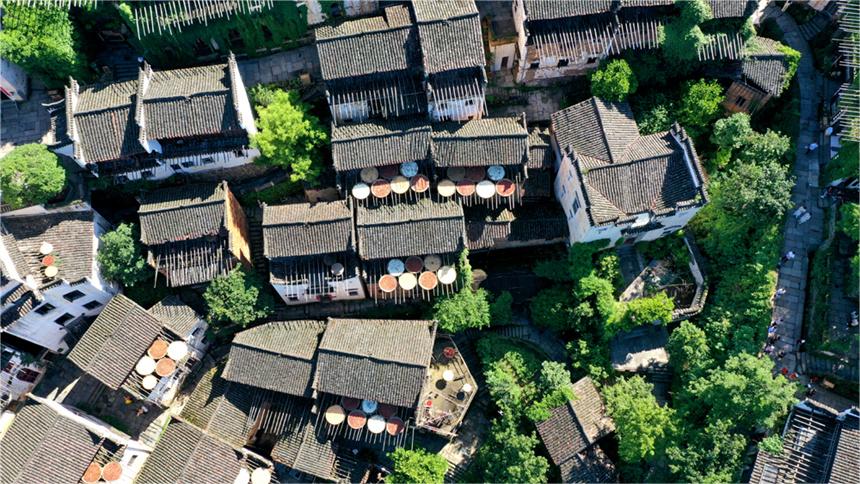Small town in E China cultivates thriving calligraphy brush industry
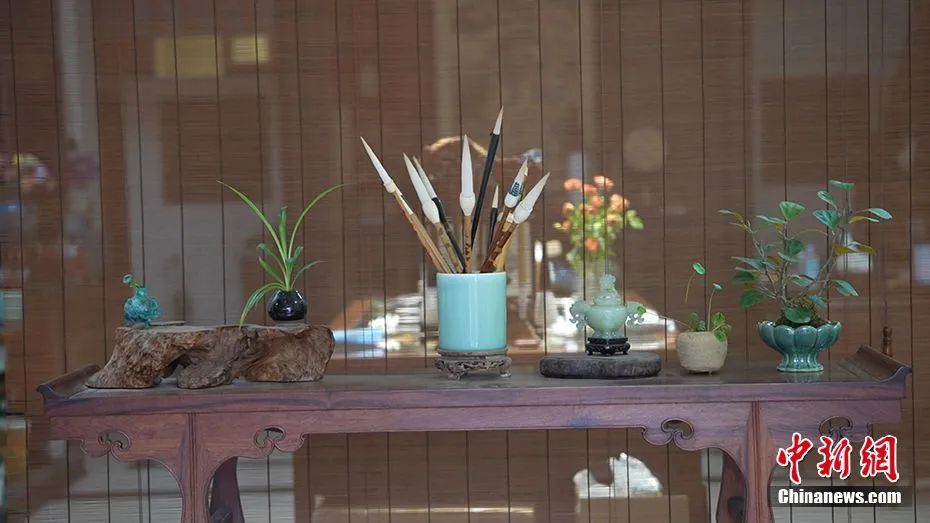
Photo shows calligraphy brushes from Wengang township, Jinxian county, Nanchang city, east China's Jiangxi Province. (Photo/Wu Siyu)
With a population of less than 50,000, Wengang township in Jinxian county, Nanchang city, east China's Jiangxi Province produced 820 million calligraphy brushes in 2023, with a total output value of 2.32 billion yuan ($319.5 million).
In the same year, the sales revenue of calligraphy brushes and related cultural products reached 8.25 billion yuan.
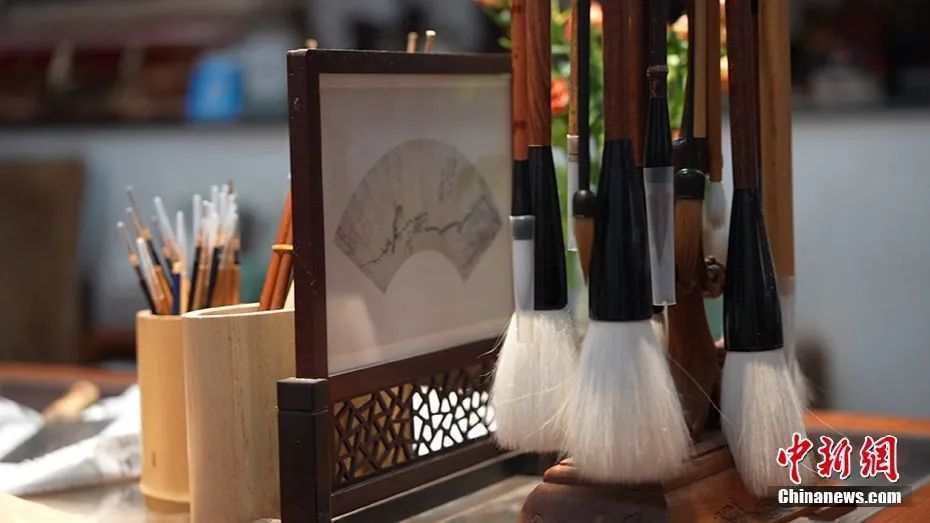
Photo shows calligraphy brushes from Wengang township, Jinxian county, Nanchang city, east China's Jiangxi Province. (Photo/Wu Siyu)

A craftsman makes a calligraphy brush in Wengang township, Jinxian county, Nanchang city, east China's Jiangxi Province. (Photo/Liu Lixin)
Wengang has a long history of producing calligraphy brushes. Introduced during the Eastern Jin Dynasty 1,600 years ago, the craft of making calligraphy brushes took root in Wengang and flourished.
By the Qing Dynasty (1644-1911), Wengang calligraphy brushes became a local tribute to the imperial court.
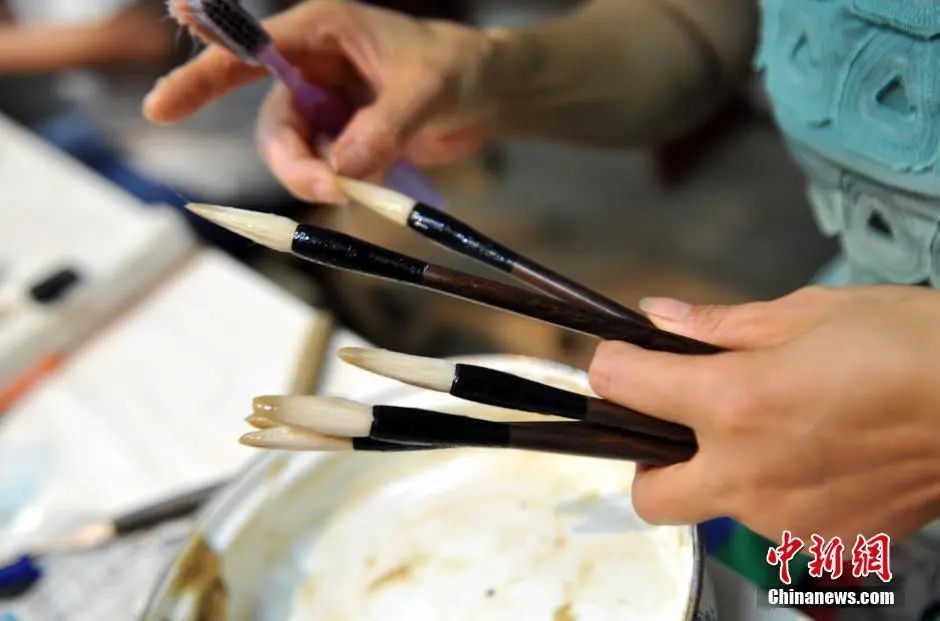
A craftsman makes a calligraphy brush in Wengang township, Jinxian county, Nanchang city, east China's Jiangxi Province. (Photo/Liu Zhankun)
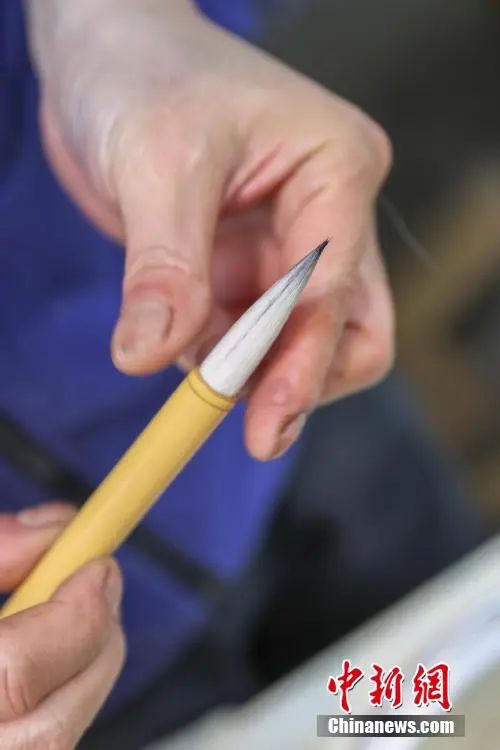
Li Xiaoping works on a calligraphy brush in Wengang township, Jinxian county, Nanchang city, east China's Jiangxi Province. (Photo/Liu Lixin)
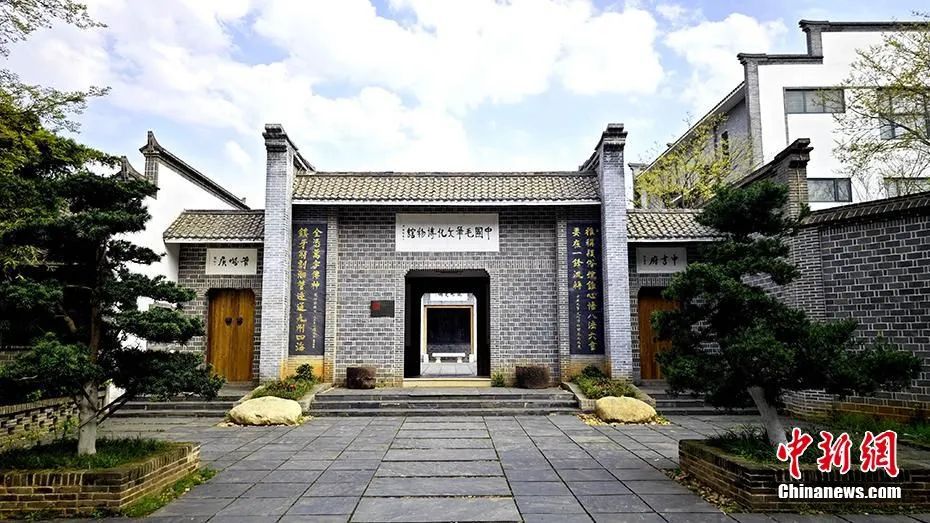
Photo shows a calligraphy brush culture museum in Jinxian county, Nanchang city, east China's Jiangxi Province. (Photo/Deng Xiaoyong)
Zhou Pengcheng, a renowned calligraphy brush maker from Wengang, has dedicated nearly 60 years to the craft. His lifelong wish is for the skill to be passed down through generations.

Zhou Pengcheng holds a calligraphy brush. (Photo/Liu Zhankun)
The process of making an authentic Wengang calligraphy brush involves 12 steps and 128 meticulous procedures. Skilled craftsmen handle each step with great attention to detail and craftsmanship.
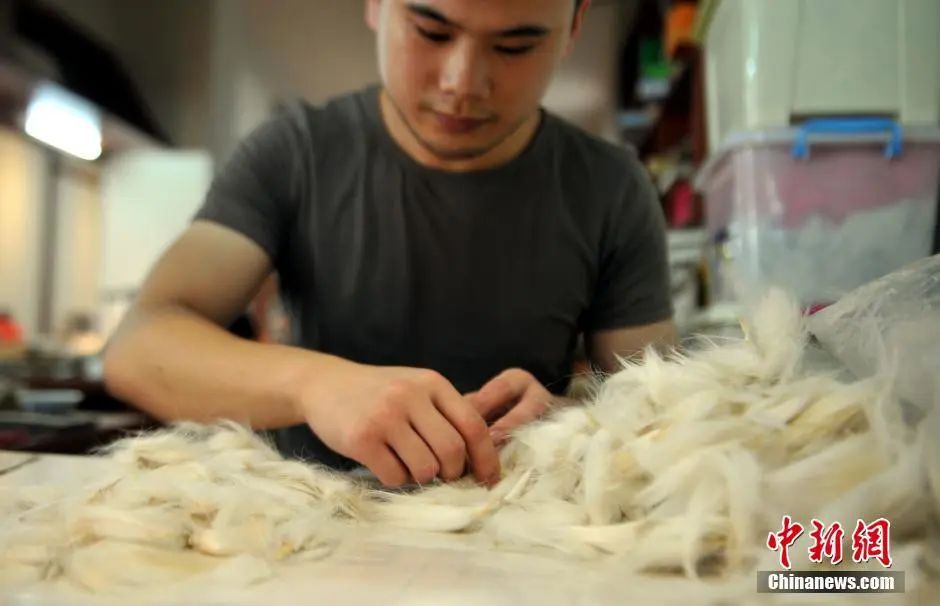
A worker selects raw materials for making calligraphy brushes at a workshop in Jinxian county, Nanchang city, east China's Jiangxi Province. (Photo/Liu Zhankun)
The quality of a brush is determined by four essential qualities: sharpness, evenness, roundness, and resilience.

Zhou Pengcheng works on a calligraphy brush. (Photo/Liu Zhankun)
Zhou said the craft of Wengang calligraphy brush making is closely intertwined with ancient Chinese painting and calligraphy, and brushes from Wengang are deeply connected to Chinese culture.

Zhou Pengcheng writes with a calligraphy brush he made. (Photo/Liu Zhankun)
Today, Wengang is home to over 400 companies, 2,200 workshops, and 5,100 physical stores involved in the production and marketing of calligraphy brushes.

Photo shows calligraphy brushes produced in Wengang township, Jinxian county, Nanchang city, east China's Jiangxi Province. (Photo/Wu Siyu)
In recent years, local brush makers in Wengang have introduced over 400 cultural and creative items, including antique-style calligraphy brushes inspired by the Han and Tang dynasties, as well as contemporary designs that cater to the needs of modern culture.
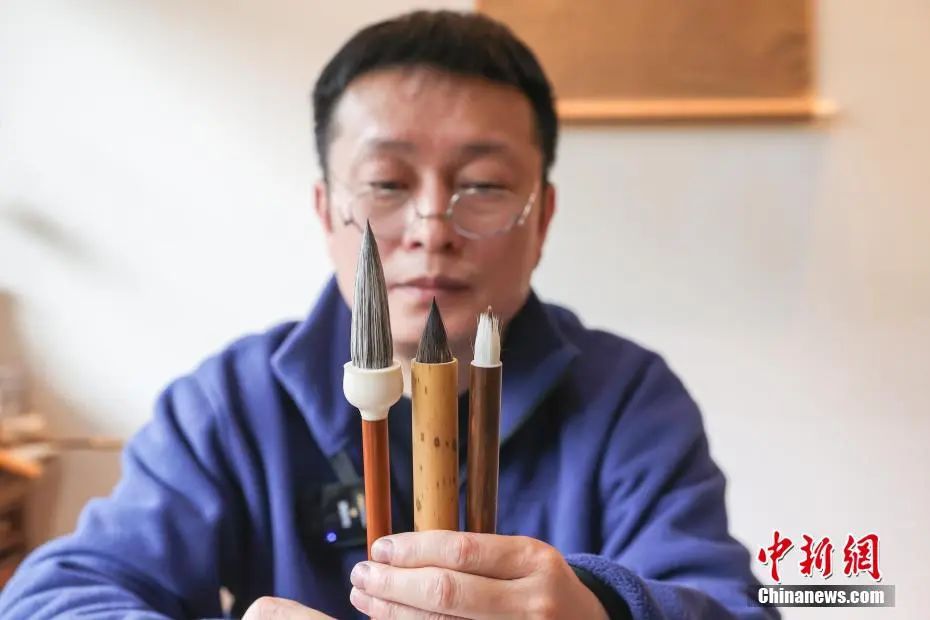
Li Xiaoping shows calligraphy brushes he made and developed. (Photo/Liu Lixin)
Li Xiaoping, a representative inheritor of the intangible cultural heritage of Wengang calligraphy brush making, has dedicated himself to researching and preserving ancient brush making techniques.
His exquisite creations have sparked a renewed interest in the study of ancient calligraphy brushes within the Chinese brush industry.

Li Xiaoping works on a calligraphy brush. (Photo/Liu Lixin)
With the rise of live-streaming e-commerce, Li is now exploring innovative ways to pass on the craft of calligraphy brush making through the internet, aiming to engage and inspire more young people to appreciate brush culture.
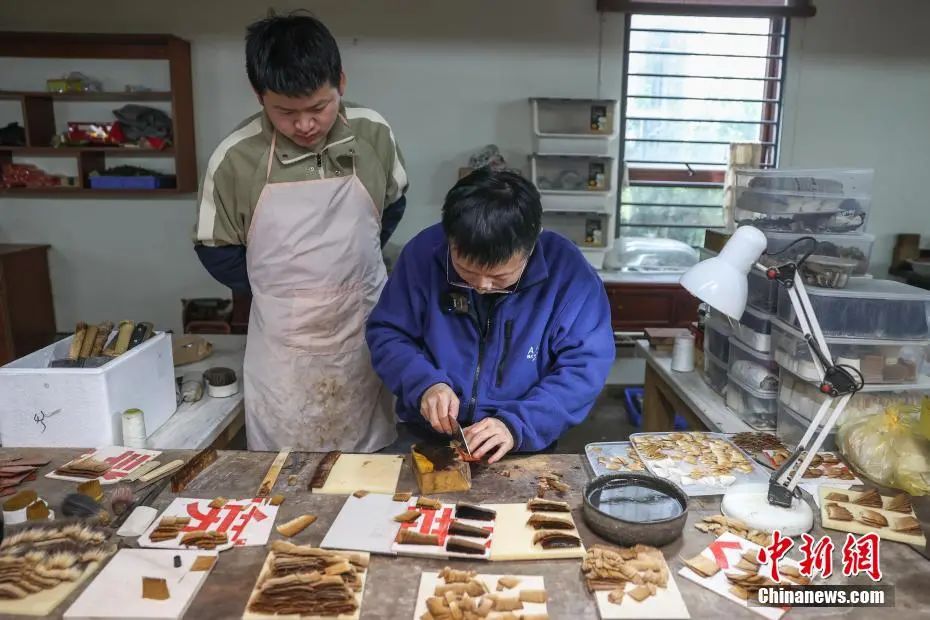
Li Xiaoping shows his apprentice a procedure of making calligraphy brushes. (Photo/Liu Lixin)
Wengang is home to over 2,600 brush companies and workshops, which provide employment to more than 12,000 practitioners.
Photos
Related Stories
- Trending in China | The inkstone: a symbol of aesthetic beauty in traditional Chinese art
- Feature: Passengers enjoy immersive experience with Chinese calligraphy on China-Laos Railway
- Middle school invites students to write school name to promote calligraphy
- Trending in China|The ink brush
- Chinese pancake roll shop owner amazes customers with extraordinary calligraphy works
- Chinese culture program for young entrepreneurs held in Djibouti
- Masterpieces of Chinese Painting and Calligraphy on display in Hong Kong
Copyright © 2024 People's Daily Online. All Rights Reserved.







